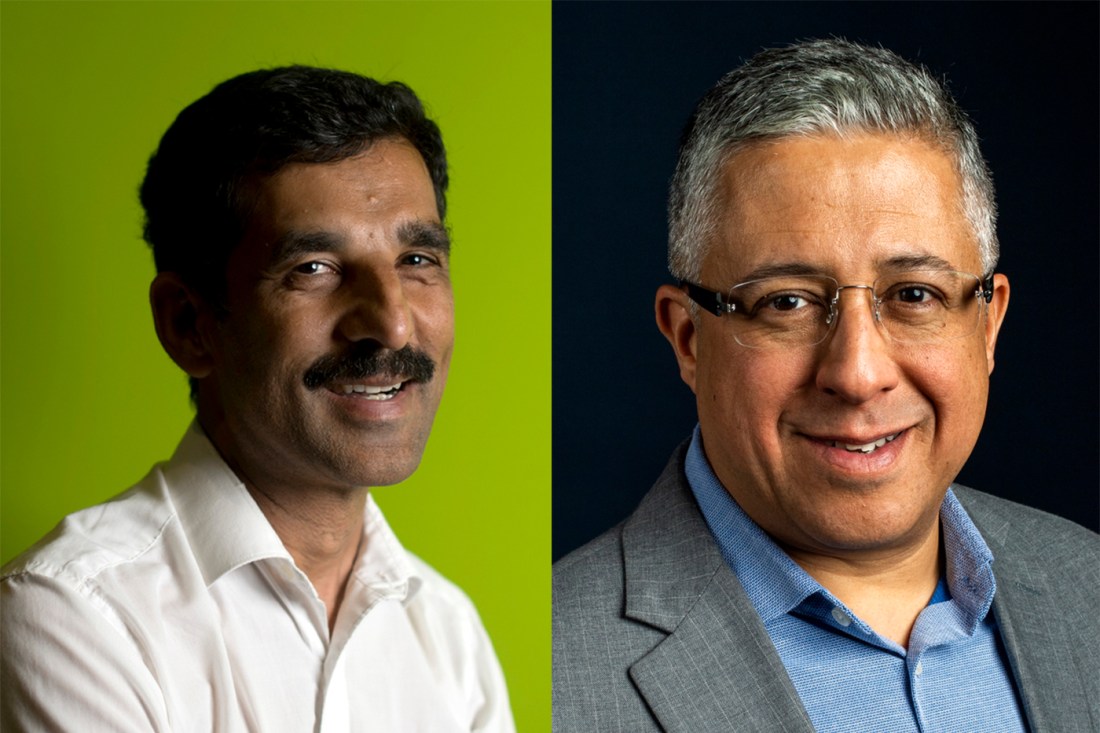India’s landing on the dark side of the moon is cheered, now comes the hard part of space exploration

Cheers erupted across India and congratulations came in from across the world last week as the world’s most populous nation became the first to successfully land a spacecraft on the south polar region of the moon.
Two Northeastern University engineers who use robots in some of the universe’s most unforgiving regions joined in the cheering.
“Everyone’s proud about it — we have a huge population of Indian students, and everyone is really excited about that,” says Hanumant Singh, a professor of electrical and computer engineering at Northeastern.
Singh, who grew up in India, works on and operates robots used in deep-sea and polar exploration.
“It’s a good thing, and I’m psyched in general,” he says.

Taskin Padir, director of the Institute for Experiential Robotics and a professor in electrical and computer engineering at Northeastern, was in a lab with interns when the news came in.
“It was lots of excitement, obviously, and space has this effect on unifying people — space is for humanity,” says Padir, who develops robots for environments including space. “I felt proud for humanity; it was a major achievement.”
But while the Chandrayaan-3 mission’s landing is nothing to dismiss — after all, just a few days prior, a Russian lander crashed on its way to the same region of the moon — now comes an even harder feat.
“Landing is one piece, exploration is the next piece,” Padir says. “How do we explore and how do we establish ourselves on that side of the moon is the next step.”
That exploration is important because of the presence of ice on polar regions of the moon. Scientists are currently trying to figure out how to convert the hydrogen in the ice to fuel that can power spacecraft or even colonies on the moon.
“If you want to establish colonies, create a moon base, you need resources, and the dark side is rich in those resources,” Padir says.
But both Singh and Padir said that exploration and establishment on the dark side of the moon (perhaps better called the far side of the moon – it is referred to as “dark” not because of a lack of light but because it has been unknown) come with technical challenges.
“We are highly appreciative of what people do in space because we encounter the same problems,” Singh says. “Between you and disaster is an o-ring.”
For example, Singh mentioned the difference in atmospheric pressure between the inside and outside of a spacecraft or submersible.
“In space, allow the atmosphere to leak out and you will be in trouble,” Singh says. “Underwater, allow the atmosphere to come in and you’re in trouble.”
Moreover, maintaining communications with a robot in space or underwater is a challenge. Even traveling at the speed of light, wireless communications take a long time to reach Earth from space, Singh says, while such radio waves don’t work deep underwater.
Then there is light.
Chandrayaan-3 is timed for a two-week period when the sun will shine on the landing site. Both the lander and the rover — which will make thermal, seismic and mineralogical measurements — are solar powered.
“I don’t think we’ve solved the prolonged challenges of staying there a long time,” Padir says. “For that you need power, you need communications, and the environment poses harsher conditions in temperature.”
“Yes, this mission puts humankind there,” Padir continues. “But what comes next is the harvesting of resources that will require us to send more assets — robots that will harvest materials and build things we need.”
And while he is cheering the moon landing, it’s this next step that Padir says gets him and the students in his lab excited.
“It will make us keep our robots more reliable and able to operate in those harsh environments,” Padir says.
Cyrus Moulton is a Northeastern Global News reporter. Email him at c.moulton@northeastern.edu. Follow him on Twitter@MoultonCyrus.






